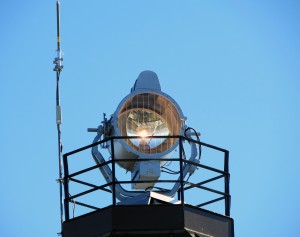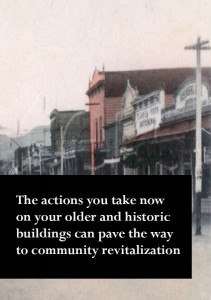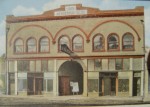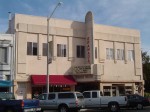On Tuesday, October 22, the “Eye of Diablo” was returned to its home at the top of Mount Diablo in a ceremony attended by volunteers, Park Service employees, and, most notably, Pearl Harbor Attack Survivors Mickey Ganitch, Chuck Kohler, and John Tait. The Beacon, as the “Eye” is known, is a rotating light that helped ships and airplane pilots navigate their craft. It was installed at the top of the mountain in 1928, and Charles Lindbergh himself flipped its inaugural switch. The light went dark in 1941, the day after the attack on Pearl Harbor, for reasons of national safety. The Beacon sat still on its perch on the mountain for more than two decades before WWII veterans and Pearl Harbor survivors began a tradition of broadcasting its light every year on December 7, to commemorate the attack on Pearl Harbor and to honor its 2,402 victims. Thus, the Beacon came to symbolize not only a significant period in aviation and maritime history, but became an emblem of patriotic pride for Pearl Harbor survivors and military veterans.

This important East Bay treasure was not immune to the ravages of time, however, and in 2013 the nonprofit group Save Mount Diablo reached its fundraising goal to restore the light, which suffered from numerous mechanical issues borne from 85 years of exposure to salt air and mountaintop gusts. Garavaglia Architecture, Inc. is very proud to have played a part in the restoration of this important Bay Area treasure. As the preservation consultants hired to oversee the painstaking conservation process, we were thrilled to attend the October 22 reinstallation ceremony to honor the Beacon and its caretakers, who have ensured its light will continue to shine for years to come.
“Our involvement in the beacon project is a distillation of historic preservation architecture. Melding the emotional content of a physical structure with the repair of its archaic system to ensure its survival for many more decades, goes to the heart of why we do what we do. The Beacon project, although straightforward in its need and implementation, holds so much meaning for our culture. It is emblematic of real patriotism and how we now honor those persons seven decades later. It has become a symbol to a group of Americans that fought and died (or survived to tell their story) at Pearl Harbor. It is also a means for volunteers to contribute a part of themselves to this important event and the individuals that are being honored. While the Beacon exemplifies early aviation navigation, it has become a memorial, a crucible of memory. Every year its single shaft of light shines into the darkness, reaching out to the atmosphere, lighting a way for those that came before, and those that might tread that path again. So, on December 7th, look to the mountaintop for the beacon and participate in history.” – Mike Garavaglia, AIA, LEED AP BD+C

 How we prepare for economic recovery now can have lasting effects on the future character of our communities. With slowed growth, now is the perfect time to rework and expand revitalization and sustainability programs.
How we prepare for economic recovery now can have lasting effects on the future character of our communities. With slowed growth, now is the perfect time to rework and expand revitalization and sustainability programs.
 Garavaglia Architecture, Inc’s integrated staff of architects and historians brings the unique perspective of each stakeholder’s point of view to all of our projects. Contact us to find out how this perspective can benefit your project.
Garavaglia Architecture, Inc’s integrated staff of architects and historians brings the unique perspective of each stakeholder’s point of view to all of our projects. Contact us to find out how this perspective can benefit your project.